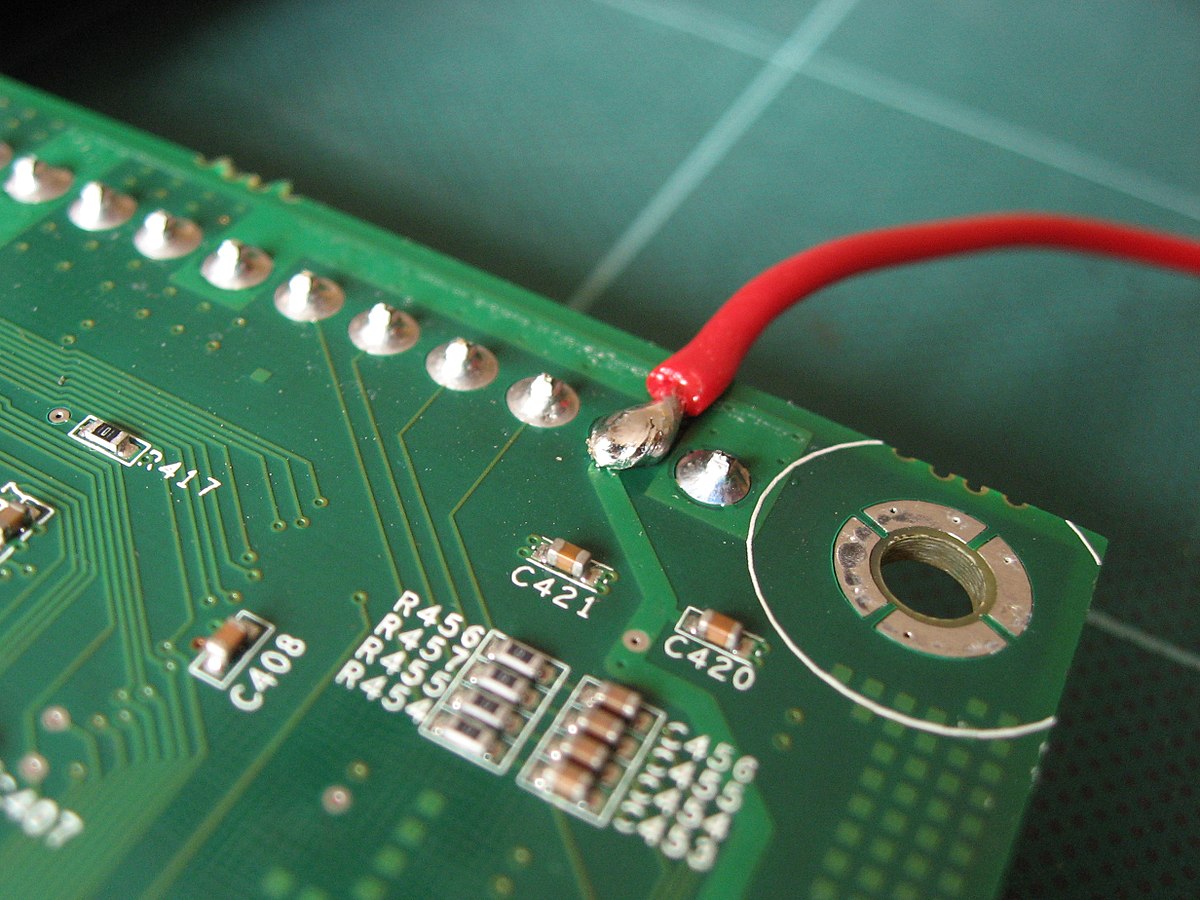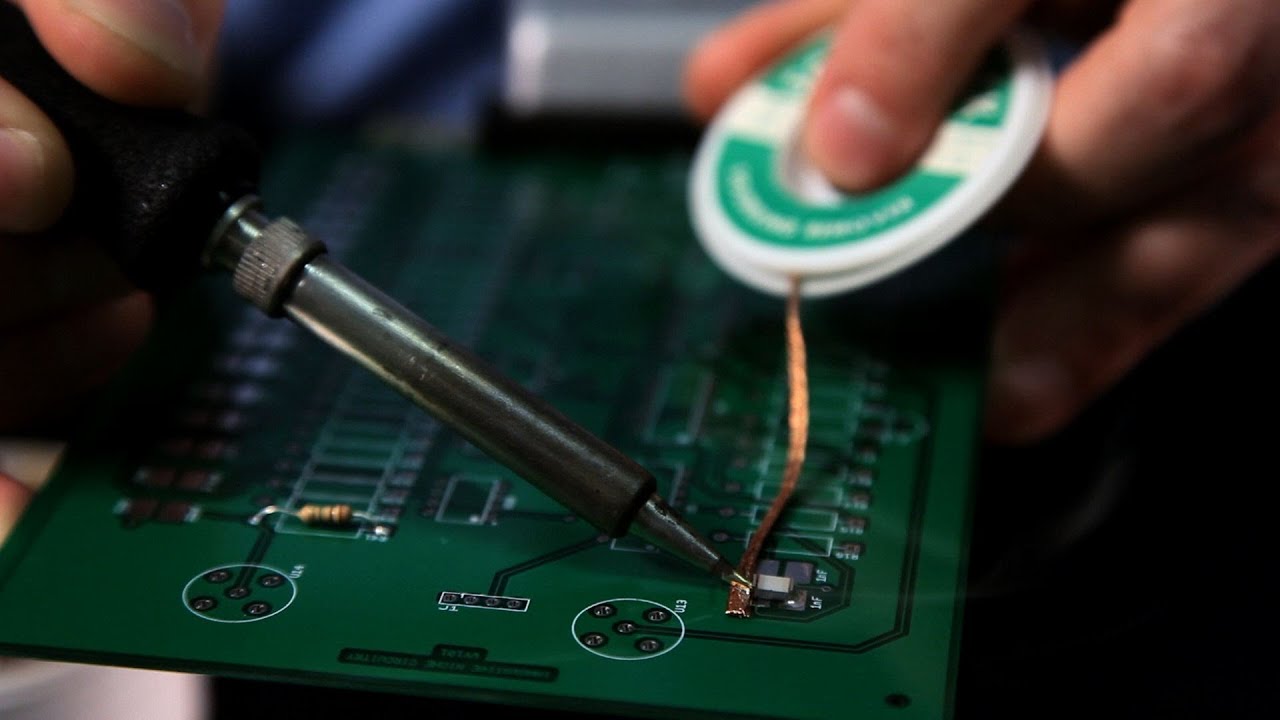Lead Free Solder Melting Point: Does it Influence the Entire Soldering Process?
Do you think the soldering process can proceed if the solder doesn’t melt? No, it cannot. Melting of the solder is one of the key sub-processes of the entire soldering process. Therefore, lead free solder melting point is the most critical process parameter in a Pb-less soldering process.
Lead free solder melting point is the temperature at which the alloy liquefies and begins to flow. It holds great importance in the soldering process. Because unless the solder is liquefied, it won’t flow over the adjoining metals. And if it won’t flow over the adjoining metals, it will certainly not solidify over them and bind them together.
Considering the importance of the liquidus temperature of solder, we have dedicated this article to the importance of lead free solder melting point. But first, what is lead-free solder melting point?

What is Lead Free Solder Melting Point?
Lead free solder melting point lies above 200 °C and depends upon the composition of the alloy. The melting point often called the liquidus temperature, is the temperature at which a solid becomes a liquid.
When the temperature of the solid rises, its atoms vibrate. The vibration of atoms weakens the interatomic forces. And when the temperature crosses a certain threshold, the interatomic bonds, which hold the atoms together, break. And the solid becomes a liquid and begins to flow. This threshold temperature is the melting point of the solid.
Lead free solder melting point is one of its most important characteristics. You can estimate the degree of its importance from the fact that the melting temperature of a solder determines whether a solder can be used in a particular process or not.
The melting point of the most common lead-free solder, the Tin-Copper-Silver, lies between 217 to 220 °C. While there are other lead-free alloys, like silver-bismuth, which have a much higher melting range, between 260-360 °C.
Lead free solder melting point is significantly higher than traditional Pb-based solders. Therefore, lead-free soldering process requires expertise and vigilance to ensure that the increased amount of heat or prolonged heating process do not damage the circuit board or its components.
Lead-Free Solder Point: Why is it Higher?
Lead-free solders are gaining popularity among commercial manufacturers because of the restrictions on the use of lead in consumer electronics. However, they still seem to be pretty unpopular among small-scale solderers and hobbyists.
High lead free solder melting point is what has kept the Pb-free solders from becoming popular among small-scale solderers and hobbyists. Because these solders melt at a higher temperature, they are not as easy to work with as the lead solders.
When two or more pure elements are fused, the properties of the resulting mixture are defined by the properties of parent elements and their composition in the mixture.
Lead-free solders majorly consist of titanium. Titanium has a low melting point, and other metals that have a very high melting point. The presence of these high melting point metals increases the overall melting point of Pb-free solder alloys.
To put things into perspective, let’s take the example of a common lead-free solder, the tin-copper solder. Tin melts at around 230 °C. While copper melts above 1000 C. When these two metals are mixed, the presence of copper in an extremely small quantity (3%) gives the Sn-Cu alloy a melting range of 227-300 °C.
Importance of Lead Free Solder Melting Point
Lead free solder melting point determines a lot of variable for the soldering process. But some of the most important ones include:
The Choice of Solder
The melting point of solder will decide whether that solder is good enough to be used in a given soldering process or not.
For example, if the electronic equipment is likely to face a high-heat treatment after soldering. Using a low melting solder, like SnPb solder, will not be a good idea.
Similarly, if the electronic equipment contains thermally sensitive materials, you cannot use high melting solders to solder such equipment as it can damage the board and its components.
Therefore, lead-free solder's melting temperature is important. To help you determine the best type and composition of solder for your soldering process.
Type of Soldering Iron
Lead solders are low melting alloys, you can work with them using a low-powered soldering iron. However, lead-free solders have higher melting points. Therefore, you will have to use a high-powered soldering iron that can melt the solder in the right time frame.
Therefore, the melting point also determines the type of soldering iron that you must use for a given soldering process.
Differentiates between Soldering, Brazing, and Welding
Soldering, brazing, and welding are all processes that fuse/join metals together. Since we are discussing the importance of lead-free solder melting point. Therefore, it is important to note that melting point is the sole parameter that differentiates between soldering, brazing, and welding.
Welding involves melting two adjoining metals and fusing them to make a joint. This process takes place at extreme temperatures and arc welding is carried out above 3000 C. Welding does not require any filler material, like solders, and directly melts the parent metal.
Brazing, on the other hand, is more similar to soldering. It joins the two parent metals using a filler material. What differentiates brazing from soldering is its working temperature.
Brazing use fillers of metals. Like aluminum, cobalt, gold, nickel, copper, or silver. And these fillers melt above 450 °C contrary to soldering’s 300 °C max.
Soldering too uses filler materials but they are made of soft metals like tin and lead, or of high melting metals but in very minute quantities. Therefore, the melting point in the soldering process is the lowest out of the three metal-joining processes.
Influences Process Outcome
The lead-free solder melting point will determine whether the soldering process will be successful or not. How?
Well, as we discussed above, if you use a high melting solder while soldering electronic equipment with heat-sensitive components, you will end up ruining the entire component.
Moreover, if you use a solder that has a low melting point in a process where the soldered part will go through post soldering heat treatment, the solder joint will melt resulting in a destroyed project.
What Solder Must be Used?
When looking for solders, you may come across lead classified based on two factors: whether they are eutectic or non-eutectic and if they are lead-based or lead-free. So, what solder should you use?
Eutectic or Non-Eutectic
Eutectic solders are alloys that melt and solidify at a constant temperature unlike the non-eutectic solders the melt and solidify over a range of temperature. For example, some alloys like Sn95.5 Ag3.8 Cu0.7 are eutectic, melting at 217 °C. On the other hand, Sn95.5 Ag4 Cu0.5 is non-eutectic and melts between 217 to 220 °C, and have a melting range of 3 °C.
Because eutectic solders melt at a constant temperature, they liquefy quickly, and hence soldering with eutectic solders is easier, quicker, and more preferred. However, some processes necessitate using non-eutectic solders which are difficult to handle and may lead to solder joint cracking if not dealt with vigilance.
Lead or Lead-Free Solders
Low melting alloys like lead-based alloys lose their strength when the temperature nears their melting point. In a soldered part, they may lose their strength which may end up damaging the solder joint. This feature makes them unsuitable for processes where the temperature is expected to reach closer to their melting temperature.
On the other hand, Pb-free solders like Gold-Tin solder is on the expensive side, but it does not lose its strength when the process temperature approaches the elements’ melting point.
So, if you expect your process temperature to rise to the solder’s melting temperature, a Pb-free solder would be your best choice.

Conclusion
Lead free solder melting point influences the entire soldering process, right from the beginning, where it determines the type of the solder to be used, up until the end where it shapes the outcome of the project.
Therefore, one must never overlook the effects of lead free solder melting point when picking a solder or using it during soldering.
For More Information, Contact Us Today!




